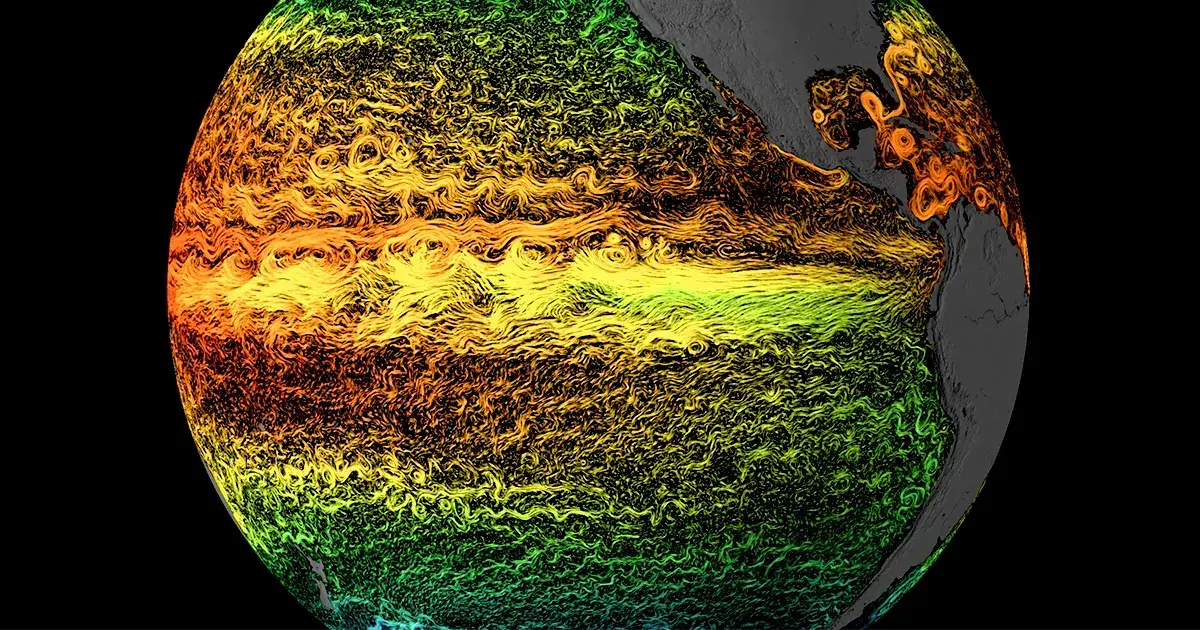he/him
Materials Science PhD candidate in Pittsburgh, PA, USA
My profile picture is the cover art from Not A Lot of Reasons to Sing, But Enough, and was drawn by Casper Pham (recolor by me).
- 4 Posts
- 20 Comments

 2·1 year ago
2·1 year agoI agree completely, especially about the negative knock-on effects on the quality of science overall. Making replications worthwhile for researchers to spend time and money on is certainly going to be a challenge that the institution of academia will need to figure out sooner or later (fingers crossed for sooner, but realistically probably later).
Good luck with your PhD too! I hope it’s going well so far!

 3·1 year ago
3·1 year agoWith all due respect to Penrose – who is indisputably brilliant – in probability when you start to say things like, “X is
10^10^100times more likely than Y,” it’s actually much more likely that there’s some flaw in your priors or your model of the system than that such a number is actually reflective of reality.That’s true even for really high probability things. Like if I were to claim that it’s
10^10^100times more likely that the sun will rise tomorrow than that it won’t, then I would have made much too strong a claim. It’s doubly true for things like the physics of the early universe, where we know our current laws are at best an incomplete description.

 2·1 year ago
2·1 year agoMaybe all of those PhD students would have their time better spent on this task than pretending, as if often the case, they’ve done some original work on an important theory that’s found something “for the first time”.
I mean I’m personally biased as a PhD student myself, but I think this is a great idea. I made the core of my project to basically take a picture of a phenomenon that has been inferred from spectroscopy but not observed directly. So verification, not exactly replication, but same idea. Turns out that doing something like this is very hard and makes a worthy PhD project. (I haven’t managed it yet, and am starting to wonder if my eventual paper might actually end up being in support of the null hypothesis…)
But I’m also not looking to go into academia after I graduate, so I’m not to worried about trying for something high impact or anything like that. I think for someone angling to be a professor the idea of a replication or verification project may be a harder sell, which is largely down to the culture of academia and how universities do their hiring of post-docs and such. I mean, even in this case more people are still going to be familiar with the names of Lee and Kim than any of the researchers who put in work on replication studies (can you name any of them without checking the article?).
tl;dr definitely a worthy goal and replications should absolutely be encouraged, but it’s going to take a while to change the whole academic culture to reinforce that they’re valuable contributions.

 2·1 year ago
2·1 year agoYeah, persistence hunting! It’s cool stuff.
I remember learning about this applied to various animals
Another one of the studies I found while googling around about this yesterday mentioned something about kangaroos right at the end, and apparently their fast hopping gate is especially efficient. The mention seemed to come a bit out of the blue right at the end of the conclusion, but I was also just skimming so I may have missed a discussion of kangaroo gaits earlier in the paper.

 1·1 year ago
1·1 year agoI think the biomechanics of walking and running makes this a little more complicated than that. The efficiency of moving your body in different ways is different. I’m certainly no expert, but if I’m reading this study right (it’s open access so feel free to check me), then walking will pretty much always use less energy to cover a given distance than running/jogging, unless you force yourself to “fast-walk” at high speeds where a running/jogging gait would feel more natural.
I’m also pretty sure that for a given distance you would count fewer steps while running than you would if you walked the same distance, since each step covers a lot more distance when you run. So in terms of step counting, steps taken while running should be “worth” a lot more in terms of exercise than steps taken while walking.
In either case, my understanding of the evidence is that it has pretty consistently been shown across many different studies that almost any amount of daily exercise – walking, jogging, cycling, etc – is way, way better than no daily exercise at all. This study seems to fall nicely into that pattern.

 4·1 year ago
4·1 year agoAutomated drug discovery is a very interesting area at the moment, especially for cases like these where you’re confined to a relatively small subset of possible biomolecules. This kind of thing works much less well in other kinds of settings where the process chemistry can vary wildly between seemingly similar compounds. It’ll be neat to see how far they can take this idea!

 1·1 year ago
1·1 year agoI’d not heard of him before reading this, is he a big name in climate dynamics research?

 4·1 year ago
4·1 year agoAh I had a suspicion this article would be about Ambri! I applied to work there once while I was in undergrad (didn’t get the job). Very cool tech, glad to hear that their work is coming to fruition. Good grid-level energy storage will be an important enabling technology for wider adoption of renewables.

 11·1 year ago
11·1 year agoI’ve always heard that “organic” farming is really not especially different from conventional farming, including from some folks in agriculture. Like, they still use chemical pesticides and stuff, just different ones that are less effective and so sprayed more heavily.
I don’t have anything to back that up with though, so there’s a reasonable chance you have better info here. I’d be interested to know more if you’ve got standards and such you can share?
The one for dispersion feels fishy; is dispersion really expected to be measured by the square root of length?
Yeah that’s a pretty standard way to do things for all kinds of random walk processes. You don’t pick up error at a constant rate with distance, as you can go either forward or backward and will often be undoing dispersion you’ve already accumulated. The most likely outcome after any distance is always for you to be exactly back where you started. However, as stated in the video, the expectation value of the root-mean-square distance from the origin (i.e. how far from the origin do you end up on average) for a random walker after N steps is the square root of N. There’s a quite good explanation on this page.
If you really dislike having the square root in there you can of course square everything to get rid of it, but at the cost of your other dimension being squared. I’d personally argue that it’s a lot easier to get a physical intuition from the ps/sqrt(km) units (you can expect to pick up dispersion proportional to the square root of the length of your fiber) than from ps^2/km (which to me just looks like inverse acceleration). The latter is valid though. In fact, if you type that into Wolfram it’ll tell you that those units are physically interpretable as the “group velocity dispersion with respect to angular frequency”!
A way that I’ve found to avoid “cursing” units is to always include what they refer to
I actually have a very neglected side project to build a little calculator app that treats units this way, where you can label them to avoid letting them cancel out. I might get some time to work on it in like a month? Or maybe I won’t get around to it until after I graduate, we’ll see 🙃

 1·1 year ago
1·1 year agoI basically have a layman’s perspective here, but just based on the abstract this particular paper doesn’t seem to be challenging the idea of a cosmological constant or the big bang as a thing that happened. Looking at the author’s other works it seems like he’s pretty big on the idea that the values of physical constants may have changed over time, which it seems like is basically his argument here too?
I’ll admit, though, I’ve not heard the phrase “tired light” before this morning, so maybe it’s enough of a red flag to discard the work out of hand. I don’t know.

 5·1 year ago
5·1 year agoThat’s really interesting! I read the abstract but I don’t really follow exactly what it is they’re proposing (and I don’t really expect I would follow even if I tried to work my way through the actual paper). It’ll be interesting to see whether other astronomers and astrophysicists take up this new model or not in the coming years though!

 4·1 year ago
4·1 year agoThere’s also a lot that you can do within the bounds of more traditional architecture to control heat movement, and which are easy to retrofit onto existing homes. For example, there’s the extremely rad sounding thermal labyrinth, and also lots of things without rad names like planting trees where they’ll shade your building or painting your roof white. It’s frankly kinda astonishing how much you can reduce your heating and cooling requirements with simple and (relatively) low cost changes like those.

 2·1 year ago
2·1 year agoThank you! ♥
Definitely a great writer, and sounds like a really interesting project! Did it work?
Audiobook is probably what I’ll do in the end. I like a physical copy but it’s a bit unrealistic for me to do much sit-down reading these days.

 1·1 year ago
1·1 year agocurrently waiting for it to be indexed on scihub or to get access via researchgate
Yeah I was kinda surprised to find out that I don’t have institutional access through either of the universities I have a login for. If you’re going to be keeping an eye out for it anyway would you mind DMing me?

 1·1 year ago
1·1 year agoThe least surprising sentence here was:
The results suggest that online dating is an ineffective coping mechanism for those facing mental health challenges
I’ve personally had extremely mixed results with dating apps, but in my own personal experience nothing about them says to me, “This is good for your mental health.” As always though, it’s good to formally study these things.
The most interesting sentence, imo, was:
The variable that most strongly predicted higher satisfaction with Tinder-generated offline dates was age
Awh man I need to get myself a new copy of that book! I accidentally left mine on a ferry a few years ago and haven’t finished reading it.
Chaos (same author) is also a fantastic read, really got me interested in the field. I ended up taking a dynamical systems class after reading that book, and though we didn’t talk much about chaotic systems in particular I could definitely see the similarities!

 0·1 year ago
0·1 year agoI’ve been watching a lot of her videos lately! I found the one on Gell-Mann amnesia to be really interesting and linked it here the other day; maybe a good one for a next watch if you haven’t picked yet.



For sure. They tend to do a good job communicating tricky science and math concepts as well. They interview experts in a coherent way, tend to take the time to properly set up the background for topics, and the writers there seem to really care about getting things right rather than being sensational. They’re one of my favorite sites for stories about math and science honestly.
I haven’t had a chance to read the article linked in this post yet, but I’ll be sitting in an airport in a few hours (I really need to go to sleep now) and I’ll look forward to reading it then!